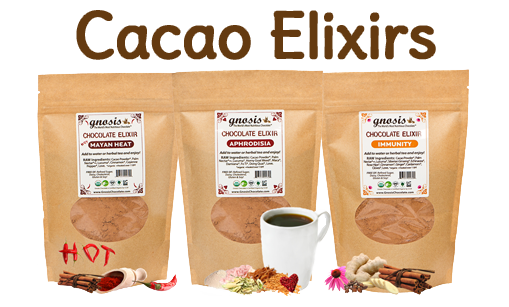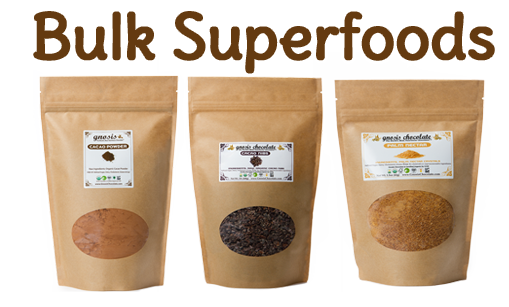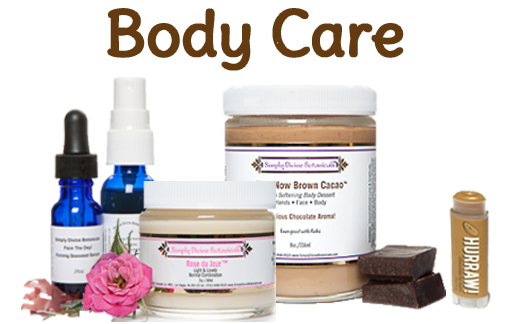Raw Integrity Project Update!
 Sunday, July 17, 2011 at 7:44PM
Sunday, July 17, 2011 at 7:44PM Dear ChocoLovers,
Here is an update to my Raw Integrity Project after my visit to Big Tree Farms in Indonesia and my second visit to The Grenada Chocolate Company located on the island of Grenada - located 100m north of Venezuela. Please don't hesitate to contact me with any questions whatsoever!
Warmly,
Vanessa
My motivation for starting the Raw Integrity Project is my passion for transparency, integrity, quality, health, and - of course - chocolate. I’m writing this update to the original Raw Integrity Report as many of you have expressed interest in the progress I’ve made in verifying the raw claims of ingredients sold on raw food shelves around the world. I will soon be writing more detailed reports on what I saw at Big Tree Farms in October 2010, and on my second visit (July 2011) to The Grenada Chocolate Company, complete with videos of their operations. For now, I’ll share the essentials of what I learned on those trips with the hope that sharing what I’ve learned (and suggesting what we can do to keeping integrity in our growing raw food community) will prove illuminating and helpful for you!
As consumers, manufacturers, and distributors - I believe we have the ability and the responsibility to set and enforce standards. If these standards are clear and we understand what it takes to achieve and maintain them, and if we take the responsibility to verify our standards are met with every transaction, then we can create a shift in the marketplace towards higher integrity products. All stakeholders will become empowered to support this shift if consumers are educated about the food supply chain. This is my motivation in writing my reports.
I was told in the summer of 2008 (by someone not profiting from the sale of one cacao source versus another) that much of the chocolate on the raw market was conventionally processed at temperatures far exceeding 118. Since I would rather stop making chocolate than put my energy and entire life into making a product that lacked integrity, I became determined to verify that the ingredients I was using were raw. It became clear that I needed to base my sourcing on fact, rather than on hearsay from an importer, or on a sales pitch from a potential supplier. I needed to understand the chocolate industry, from farm to the shelf, to identify all the steps needed to verify in the process.
Certifying raw processing is not easy; it requires travel to the country of origin, gaining access to processing operations, acquiring a thorough knowledge of the process, knowing the right questions are to ask, and how to ask them. An additional challenge is that one visit is not sufficient to certify the entire production - it can only certify that the operation is capable of raw production.
I started by asking the cacao sources I was working with if I could visit their farms and processing facilities, but my requests were deflected. I spoke with leaders in the raw food industry, health gurus, manufacturers, and consumers, but no one had the answers I sought. As a result, I was forced to extend my search beyond the raw community. I approached those who have been making chocolate for generations, and went to France to work with one of the best chocolate makers in the world, Francois Pralus. There, I commissioned his factory and chocolate making equipment to make raw paste (which is, in my book and in the majority of our community, defined as processed under 118 degrees) with no modifications to the machines, only temperature setting and time. Through this process, I learned that it IS possible to make raw paste on conventional equipment if proper procedures are followed.
I then traveled to Grenada and worked with Mott Green of The Grenada Chocolate Company - an organic fine chocolate farm to bar company. I harvested pods on their farms and followed the process through to final product. Again, I verified that it is possible to ferment cacao with no modification to the procedure other than time. Mott and I also used his conventional equipment to produce a raw paste.
Returning home, I wrote the Raw Integrity Report - which hoped would inspire some collaborations and initiatives around a third party certification. The chocolate I made with Francois and Mott are featured in our OrigiNib Collection. A few papers and newsletters were written on the topic, a few events promoting the search for truly raw cacao, and an initiative to start a Raw Trade Association (which I believe got held up by lack of funding and motivation). But the issue of what “raw” means in food production was never resolved; distributors continued to carry products labeled “raw” that were not verified, consumers continued to be confused by unsubstantiated sales pitches, and raw industry players did not collaborate on developing a universally-accepted definition of what “raw” actually means.
Around the same time, Big Tree Farms (BTF) started production of their “Truly Raw Cacao” and invited David Wolfe, himself, to Indonesia to inspect their process to verify their claims. During David’s visit, a video was recorded showing exactly how BTF made their raw butter and paste, and David announced he verified BTF cacao as being processed under 118 degrees. The transparency BTF had in inviting David and recording the details of their process for everyone to see was exciting. I had not yet personally seen the process of making raw powder and butter. Through my research it was clear that butter extraction is the hardest part of the chocolate making process because, unlike fermentation, drying, and grinding, modifications to equipment are necessary to avoid high temperatures caused by the pressure needed to extract the butter. I met the co-owner of BTF and was immediately invited to visit, so I decided to (using my mother's Sky Miles!) go to Indonesia in October 2010.
I visited BTF’s cacao, cashew, and coconut palm farms, the fermentary, and the factory. In the factory, I filmed the entire process. During the most sensitive stages (the final drying, raw roast/dehydration process, and the butter pressing stages), I used a temperature gun at incremental times and on various parts of the equipment and product. I physically touched the butter press (my hands cannot be electronically reset as a temperature gun might be able to) as it was in operation; both the machine and the butter being expelled were cool to the touch. While I will check my videos for the exact temperature, I can verify that it was significantly lower than 118 degrees. But in order to achieve this result, BTF had to modify conventional equipment diagrams and have custom machines made, at considerable expense, as there is no conventional equipment for butter and powder making at a low temperature. I have asked other companies about what modifications they've made to their equipment to keep temperatures under 118, but have not gotten any clarity. Big Tree Farms is the only supplier on the market whose facilities I have visited and can verify is producing raw cacao powder and butter (amongst their other raw ingredients).
I have gone into some detail about David’s and my visits to Big Tree Farms’s on separate investigations. I believe that BTF’s transparency is a model for all producers of raw chocolate.
My intention in all this is to help shift the marketplace in an effort to empower us all to evolve as a society. I believe that we - as consumers, producers, manufacturers, and distributors - can exercise far more control over what is on the shelf than we think is possible (which trickles down to hundreds of thousands of people across the supply chain and beyond...from ingredients and packaging to sales force, admin, technology, etc.). Anyone working hard to understand, set, and verify high standards can create a shift in the marketplace - not only the raw community, but in the food industry as a whole.
Let's work with intention and action to fill those shelves with only products that are high in their integrity. BTF's beyond fair labor practices, intensive quality assurance and dedication to transparency, and overall mission to honor the planet and its inhabitants is clear. Let's hope the same is true, or will be, for every player in this industry.
The people WANT RAW - not ink on a label that reads “raw”.
The people want QUALITY and NUTRITION - the soil (with organic and biodynamic) can produce it.
The people want to be FAIR to the farmers - and the farmers are deeply good and want to produce.
The people realize that each purchase is a VOTE with their dollars - and they are willing to invest in their health and the planet’s future.
There's nothing holding us back - the responsibility is ours.
And, thank goodness - it's CHOCOLATE after all, so this is FUN! Aren't we blessed to be in this industry, and aware of what's possible?
Please call or email me at your convenience with any feedback or questions.
Warmly,
Vanessa









Reader Comments (4)
Great read! I also discovered your youtube channel and watched you harvest raw cacao in grenada... What a great feeling that must have been.
Just read the entire blog entry. Well done, Vanessa, well done. I'm so proud of you! Your dedication and hard work to run a business (and produce delicious RAW products) with integrity, transparency, and passion is inspiring. As we say in the South, "Go 'head on, girl!"
Thank you!
Wow this is quite interesting. I thought that Raw Cacao was an easy product to make - in that all they had to do was eliminated the roasting stage from the processing. But you say special equipment is necessary during the pressing or at least modifications? I look forward to hearing more about your insights in this. Thanks for the efforts in this new industry. I do agree there needs to be more transparency and certain standards set up for the benefit of all.